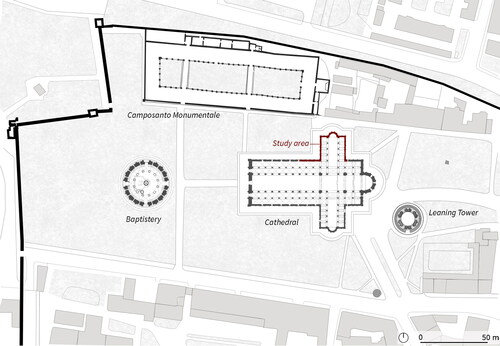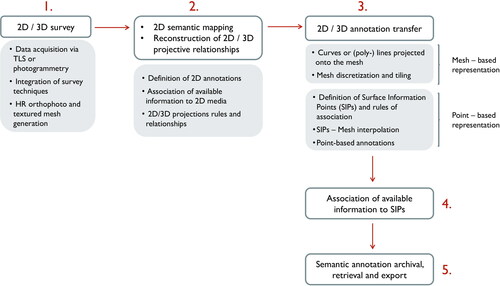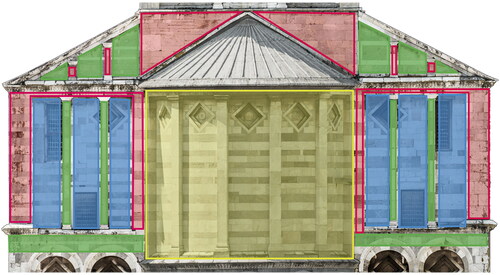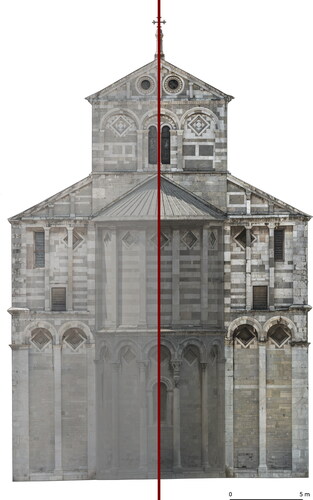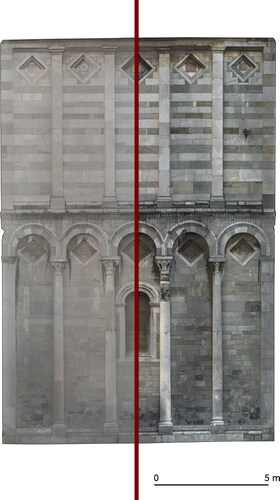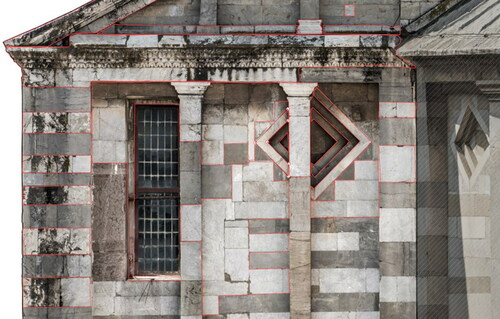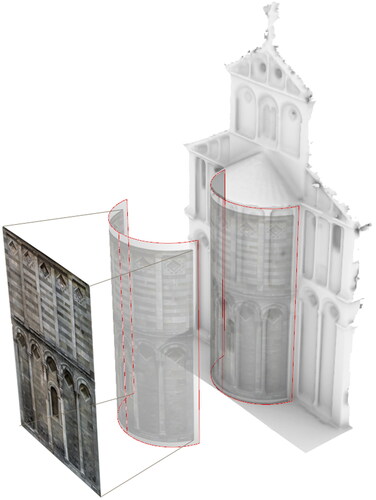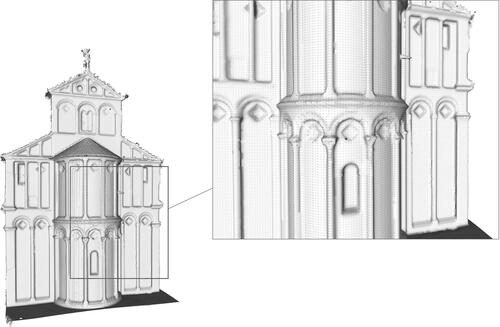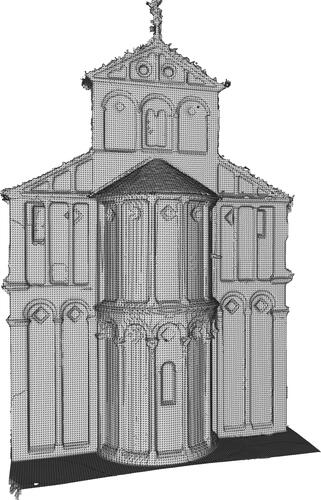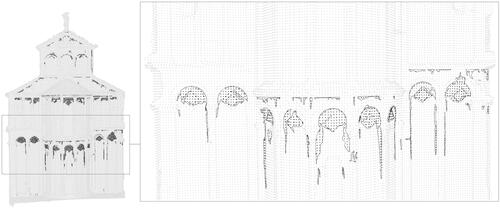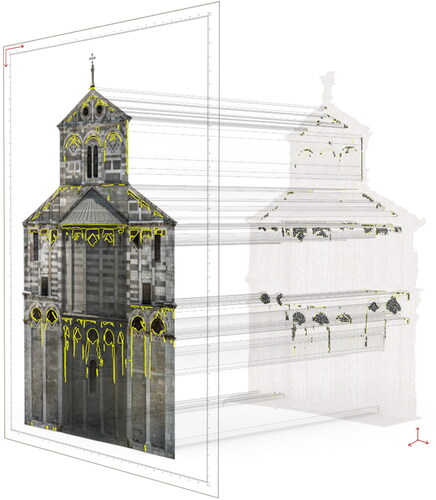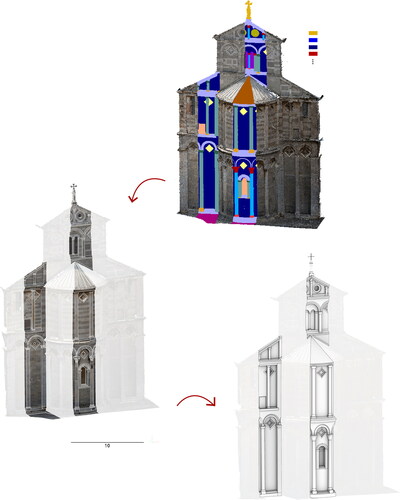Figures & data
Figure 4. Steps of the proposed methodological approach, involving: i) thematic mapping over the orthophoto; ii) projection of annotations on the mesh representation; iii) point-based representation and iv) point-based thematic mapping over the 3D model.
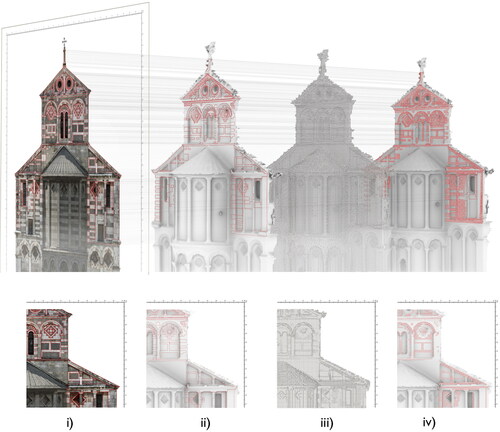
Figure 7. Example of thematic mapping of digital orthophotos: i) material survey; ii) state of degradation; iii) intervention strategies.

Figure 9. Example of annotations of the material ‘white marble’ in the upper part of the transept, performed via McNeel Rhinoceros.
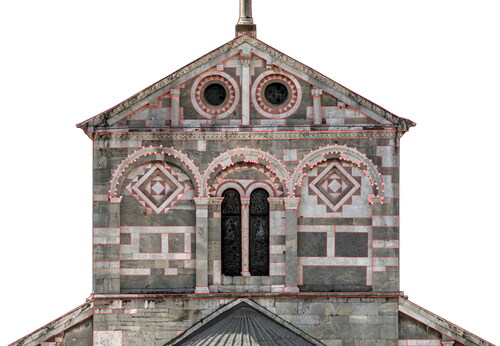
Figure 10. 2D/3D transfer of semantic annotations in the form of closed polylines or curves. Planar projection.
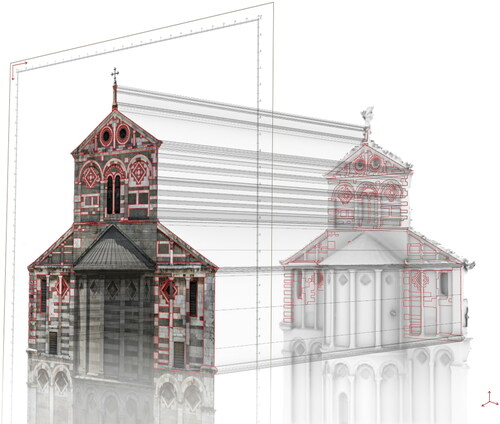
Figure 15. Algorithm for the transfer of semantic annotations in McNeel Rhinoceros visual programming interface.


